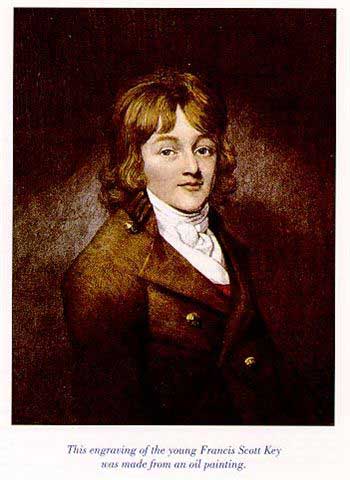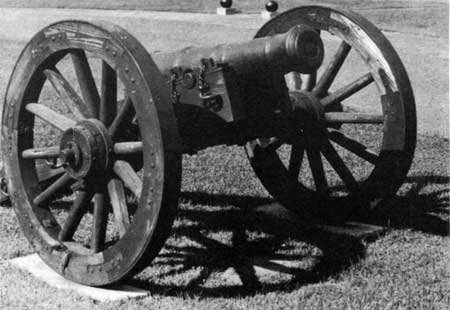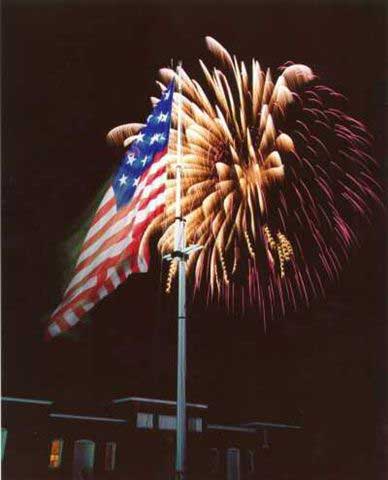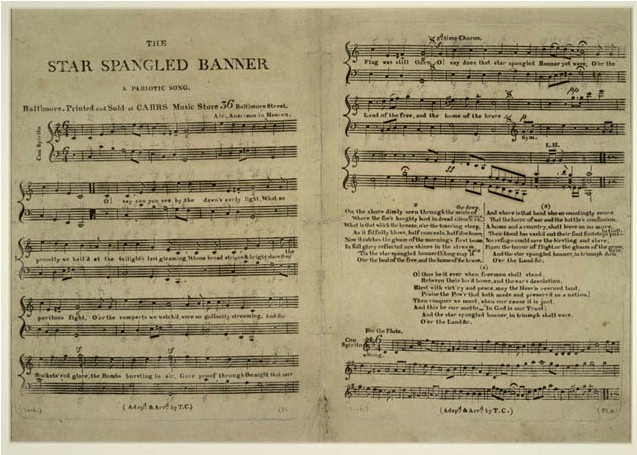Origins of Star Spangled Banner, by Francis Scott Key
Introduction.
The United States National Anthem was not officially recognised by Congress until 1931. But how did it come to be in existence? Here is the story of its inspiration for its author Francis Scott Key.

The original Star Spanged Banner held at the Smithsonian's National Museum of American History.
It inspired Francis Scott Keys to write his poem that became the United States National Anthem.
The British sack Washington DC, and move on Baltimore.
The war of 1812 was not going well for the 15 United States of America. In August of 1814, a force of 4,000 British soldiers under General Robert Ross had marched into the 14 year old Capitol of Washington DC, and promptly sacked the young city, forcing President Madison and his wife to go into hiding.
Now the invading army headed north into Maryland, backed up by a British Fleet who had taken with them a prisoner, an ageing physician, Doctor William Beanes, accused of spying.
Francis Scott Key to intervene.
Attorney Francis Scott Key, backed by President Madison was requested to intervene to save the Doctor, and on September 3rd, with Colonel Skinner, Key sailed off to Baltimore, flying a flag of truce he arrived alongside the British Tonnant on September 7th. only to be held as prisoners themselves.
Key carried letters extolling the work of Dr. Beanes in assisting British prisoners with caring for their wounds, and these were well received.
Baltimore was about to be attacked by the British, and the three men were placed aboard HMS Suprise.

Francis Scott Key, author of the Star Spangled Banner
The fight for Fort McHenry at Baltimore.
General Ross advanced upon Baltimore, backed by his British ships laying close by the beleagured city, he was determined to lay waste to the city as he had done to Washington DC. However, the General was killed in the following heated battle.
The main impedient to a British victory was a small American outpost, the pentagon shaped Fort McHenry, occupied by a 1,000 troops and defended with 57 guns. Lieutenant Colonel George Armistead was in command, and he had no thought of surrendering his Fort.
The British attack began, pounding the Fort for a staggering 25 hours, through a long and anxious night, Francis Key and his two companions freted, waited, worrying the Fort may have been over run.

A field piece of the War of 1812 period
Come the early morning light, as the smoke covering the scene began to dissipate, at 8 AM, the British ships were withdrawing, the flag with large Red and White horizontal stripes, carrying the 15 State White stars on a blue ground in the corner, was seen to be still proudly flying over Fort McHenry.

Key was able to enter Baltimore, and later, at the Indian Queen Hotel, overcome with emotion and pride, he picked up his writing instrument and dashed down a poem, The Star Spangled Banner. It consisted of four stanzas, dedicated to the " Defence of Fort McHenry."
It first appeared in the " Baltimore American. " and was sung to the tune of the English drinking song:
" To Anacroen In Heaven." the music by John Stafford Smith.
Star-Spangled Banner.
Words by Francis Scott Key.
Music by John Stafford Smith.
Oh say can you see by the dawn's early light
What so proudly we hail at the twilight's last gleaming?
Whose broad strips & bright stars, through the perilous fight,
O'er the ramparts we watched, were so gallantly streaming?
And the rockets red glare, the bombs bursting in air,
Gave proof through the night that our flag was still there.
Oh say does that star-spangled banner yet wave
O'er the land of the free and the home of the brave?
On the shore, dimly seen through the mists of the deep
Where the foe's haughty host in dread silence reposes,
What is that which the breeze, o'er the towering steep,
As it fitfully blows half conceals, half discloses?
Now it catches the gleam of the morning's first beam,
In full glory reflected now shines on the stream:
Tis the Star-Spangled Banner: Oh, long may it wave
O'er the land of the free and the home of the brave.
And where is that band who so vauntingly swore
That the havoc of war and the battle's confusion
A home and a country should leave us no more?
Their blood has washed out their foul footsteps' pollution,
No refuge could save the hireling and slave
from the terror of flight or the gloom of the grave:
And the Star-Spangled Banner in triumph doth wave
O'er the land of the free and the home of the brave.
Oh, thus be it ever when freemen shall stand
Between their loved homes and the war's desolation;
Blest with victory and peace, may the heaven-rescued land
Praise the Power that hath made & preserved us as a nation.
Then conquer we must, when our cause is just,
And this be our motto: "In God is our trust"
And the Star-Spangled Banner in triumph shall wave,
O'er the land of the free and the home of the brave.

Shown here is a copy of the first printed edition combining words and music
-- one of only ten copies known to exist.
Finally recognised at the National Anthem of the United States.
At long last, on March 3rd. in 1931, the Key poem " The Star Spangled Banner " became recognised by Congress as the National Anthem of the United States of America, usually the first verse only being sung.
Conclusion.
Francis Key went on to become Attorney for the State of Columbia, he prosecuted Richard Lawrence in 1835, the first man who tried to assassinate an American President, by attacking President Jackson, armed with two pistols.
Key died in 1843.

A stamp to remember Fort McHenry.
It's more than just a stamp, actually - it's is a whole postcard commemorating 200 years since construction first began on Whetstone Point for fortifications to defend Baltimore's harbor.
This anniversary coincides with the 200th anniversary of the founding of the City of Baltimore.
The postcard was introduced at Fort McHenry on September 7, 1997 during the Defenders Day ceremonies at the Fort.






